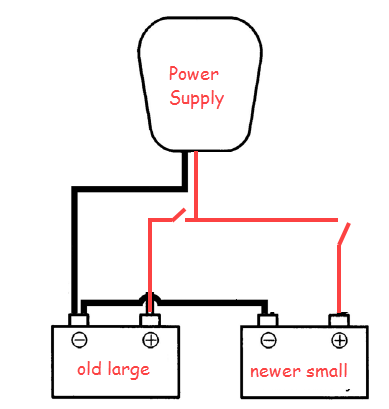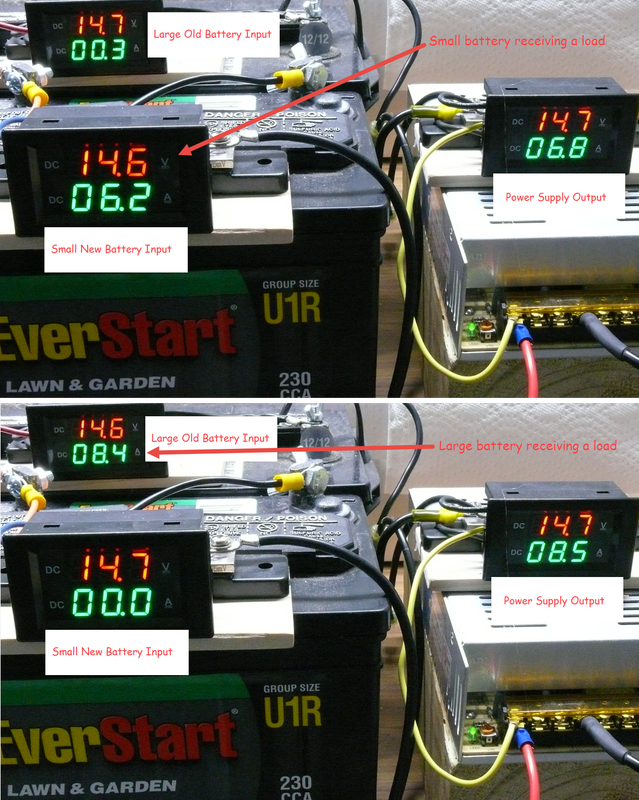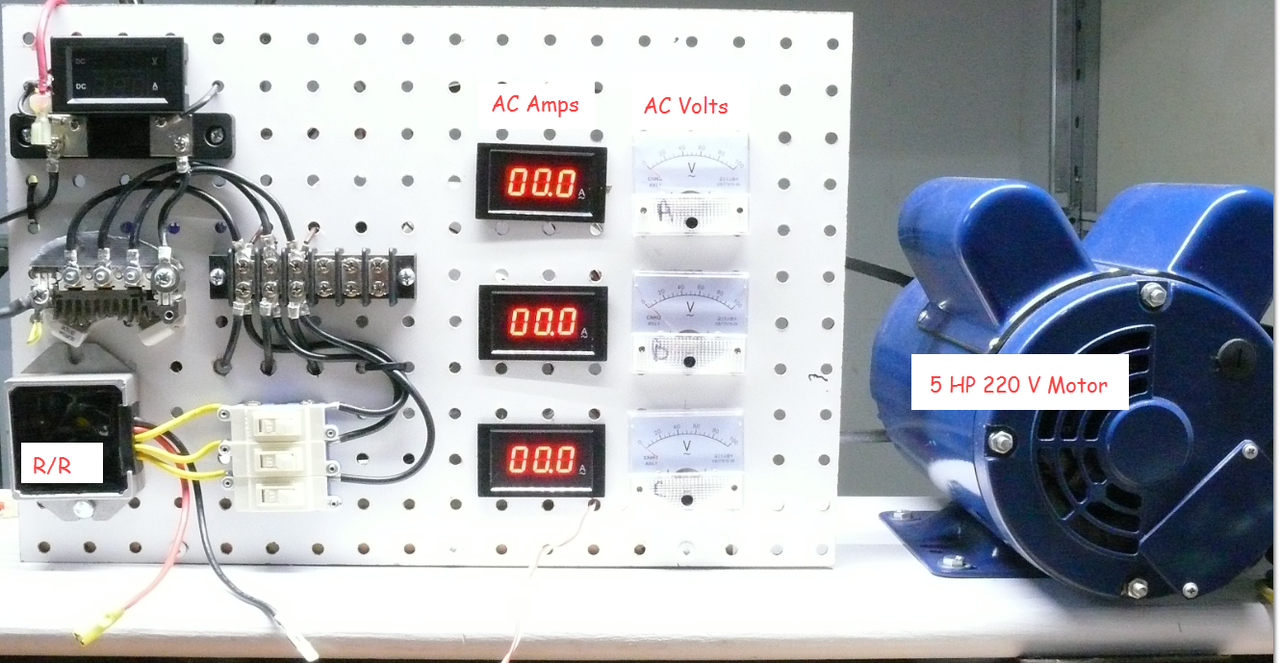This has been harder to depict than I had imagined.
On some sites it is stated that two dissimilar batteries should never be charged in parallel. Reason stated is that one battery, or the other, will have an adverse effect on the other battery.
My tests don't indicate this. Photos below show two batteries connected in parallel while being charged. One photo has the large battery fully charged with the smaller battery being charged. The other photo has the smaller battery fully charged while the larger battery is being charged. The fully charged battery has nil current flow while the less than fully charged battery draws whatever current that it normally draws.
Circuit looks like this:

Photo of the two batteries;

On some sites it is stated that two dissimilar batteries should never be charged in parallel. Reason stated is that one battery, or the other, will have an adverse effect on the other battery.
My tests don't indicate this. Photos below show two batteries connected in parallel while being charged. One photo has the large battery fully charged with the smaller battery being charged. The other photo has the smaller battery fully charged while the larger battery is being charged. The fully charged battery has nil current flow while the less than fully charged battery draws whatever current that it normally draws.
Circuit looks like this:

Photo of the two batteries;





Comment